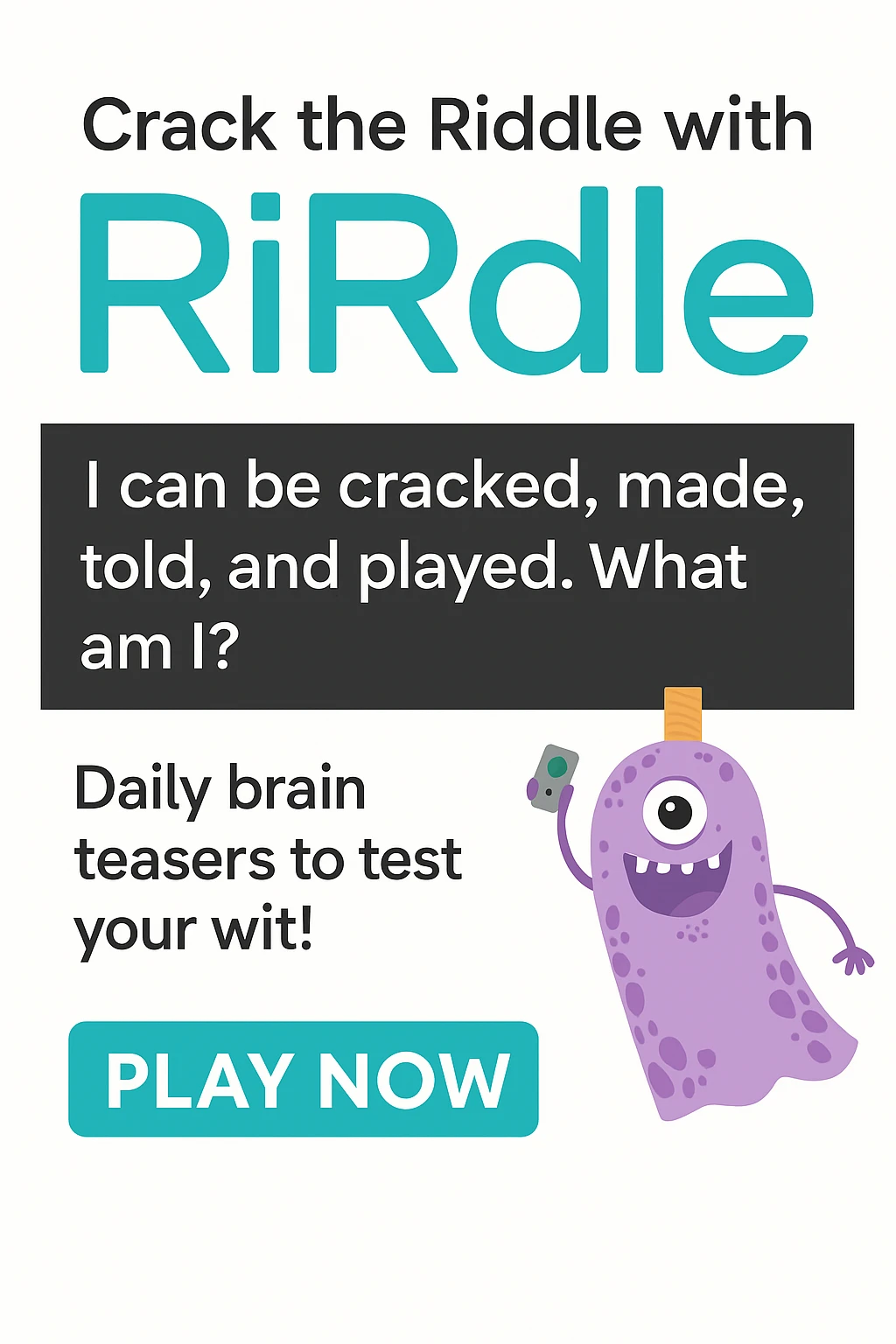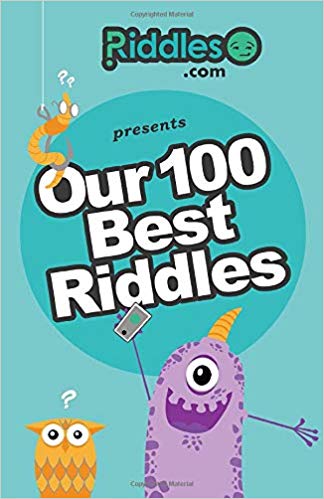Enter a keyword into the search box. The riddle search will check to see if the word is in the Title, Riddle, or Answer and return results if they exist.
"Hard" Riddles - Next 10 of 102.
Riddle:
The letters of the alphabet but only just a few;
It's hard to say if I was invented or just discovered by you.
What am I?
Answer: Music
Riddle:
Tom volunteered to be the chief organizer for the world's tether ball championships. There were 657 contestants from around the world. The tournament was set up whereby the winner would advance and the loser would be eliminated. Since there was an odd number of participants, the initial pairing leaves one player out. That player gets a bye and automatically advances to the next round. How many matches will Tom have to schedule to determine the tether ball champion?
Answer: 656 matches will be needed.
Riddle:
You and four other people robbed a bank for 200,000,000 dollars you evenly split the money for every person you get 25% of the money how much do you get.
Answer: You get a 100% cut because 25% x 4 = 100%.
Riddle:
It speaks with a hard tongue, it cannot breathe, for it has no lungs. What is it?
Answer: A Bell.
Riddle:
If you have two quarters on a table touching each other, how can you move one of the quarters without touching it? You are only allowed to touch one quarter but not move it. You cant touch the quarter that you move. You want to get at least enough room between the two quarters to insert another coin between the two quarters.
Answer: Hold down one of the quarters very firmly. Take another coin and hit it against the quarter you are holding down. Tap hard enough to move the quarter next to it aside.
Riddle:
You're stranded in a rainforest, and you've eaten a poisonous mushroom. To save your life, you need an antidote excreted by a certain species of frog. Unfortunately, only the female frog produces the antidote. The male and female look identical, but the male frog has a distinctive croak. Derek Abbott shows how to use conditional probability to make sure you lick the right frog and get out alive. How do you get out alive?
Answer: If you chose to go to the clearing, you're right, but the hard part is correctly calculating your odds. There are two common incorrect ways of solving this problem. Wrong answer number one: Assuming there's a roughly equal number of males and females, the probability of any one frog being either sex is one in two, which is 0.5, or 50%. And since all frogs are independent of each other, the chance of any one of them being female should still be 50% each time you choose. This logic actually is correct for the tree stump, but not for the clearing. Wrong answer two: First, you saw two frogs in the clearing. Now you've learned that at least one of them is male, but what are the chances that both are? If the probability of each individual frog being male is 0.5, then multiplying the two together will give you 0.25, which is one in four, or 25%. So, you have a 75% chance of getting at least one female and receiving the antidote. So here's the right answer. Going for the clearing gives you a two in three chance of survival, or about 67%. If you're wondering how this could possibly be right, it's because of something called conditional probability. Let's see how it unfolds. When we first see the two frogs, there are several possible combinations of male and female. If we write out the full list, we have what mathematicians call the sample space, and as we can see, out of the four possible combinations, only one has two males. So why was the answer of 75% wrong? Because the croak gives us additional information. As soon as we know that one of the frogs is male, that tells us there can't be a pair of females, which means we can eliminate that possibility from the sample space, leaving us with three possible combinations. Of them, one still has two males, giving us our two in three, or 67% chance of getting a female. This is how conditional probability works. You start off with a large sample space that includes every possibility. But every additional piece of information allows you to eliminate possibilities, shrinking the sample space and increasing the probability of getting a particular combination. The point is that information affects probability. And conditional probability isn't just the stuff of abstract mathematical games. It pops up in the real world, as well. Computers and other devices use conditional probability to detect likely errors in the strings of 1's and 0's that all our data consists of. And in many of our own life decisions, we use information gained from past experience and our surroundings to narrow down our choices to the best options so that maybe next time, we can avoid eating that poisonous mushroom in the first place.
Riddle:
Not born, but from a Mother's body drawn, I hang until half of me is gone. I sleep in a cave until I grow old, then valued for my hardened gold. What am I?
Answer: Cheese.
Riddle:
If you like pretty gems that sparkle and shine, I invite you to dig in my virtual mine. My first is purple, fit for a king, My second is green where Dorothy did her thing. My third is red, July's birthstone as well, My fourth is seen in strings and is found inside a shell. My fifth is hard, pure Carbon, and expensive to buy, My sixth is Crocidolite, striped like the big cat's eye. Seventh is two words, a man-made fake of April's stone, Eighth is very dark and found at Lightning Ridge alone. Now take from each gem, one letter in its turn, And you will find the stuff for which even the gods yearn. What am I?
Answer: Answer: Ambrosia The gems are: Amethyst Emerald ( Emerald City in the Wizard of Oz ) Ruby Pearl Diamond Tiger's eye Cubic Zirconium (Fake diamond) Black Opal Taking the first letter of Amethyst, second of Emerald, etc.. gives Ambrosia - The food of the gods.
Riddle:
I'm a word that's hardly there. Take away my start, and I'm an herbal flair. What am I?
Answer: Sparsely (No S = Parsley).
Riddle:
While playing with a metal washer shaped like a ring, Dave accidentally pushed it on his finger too far and couldn't get it off. Trying to remove it using soap and water didn't work. The hospital sent him to a service station thinking they could cut the metal. Since the ring was made with specially hardened steel, it couldn't be cut. Just then Bob arrived on the scene and suggested an easy way to remove the washer in just a few minutes. What was his solution?
Answer: Bob suggested that Dave hold his finger in the air while someone wound a piece of string tightly around his finger just above the metal ring. The string forced the swelling down. As they unwounded the string from the end nearest the ring, someone else slid the ring up. They continued winding and unwinding the string until the ring could be easily removed.


